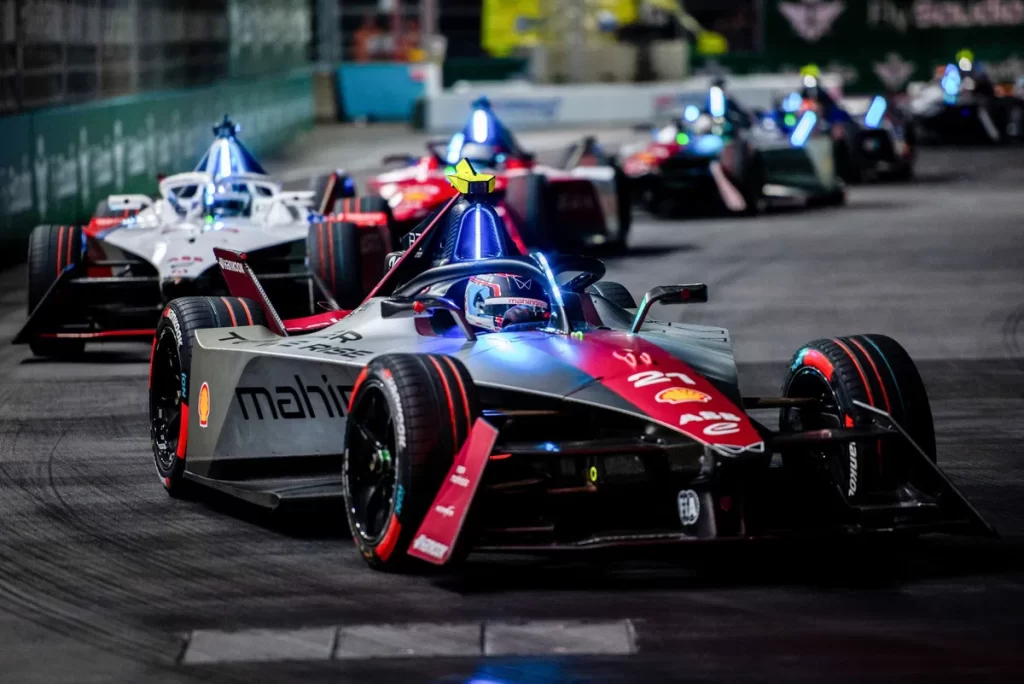
As the climate crisis escalates, Formula One (F1) is exploring innovative ways to minimize its carbon footprint and enhance sustainability. Following a broader trend in the sports world, F1 has pledged to achieve net-zero carbon emissions by 2030. This ambitious commitment involves significantly reducing emissions and offsetting any remaining carbon.
A crucial step in this journey is the mandate that all F1 teams must utilize 100% sustainable fuels starting in 2026. Currently, F1 vehicles operate on a blend that includes 10% ethanol biofuel. Fans have become increasingly familiar with concepts like “carbon neutral,” prompting discussions about the sport’s future amidst its traditionally high emissions. One promising alternative is synthetic fuel.
Synthetic fuels aim to achieve carbon neutrality by combining carbon and hydrogen to create hydrocarbons, similar to conventional gasoline. The key distinction lies in their production: rather than relying on fossil fuels, the carbon used in synthetic fuels is extracted from the atmosphere using filters, while hydrogen is derived from water through electrolysis powered by renewable energy sources, such as wind and solar. Companies like Zero Petroleum are at the forefront of this initiative, producing fossil-free versions of gasoline, jet fuel, and diesel, enabling vehicles to operate without modifications.
Despite the excitement surrounding synthetic fuels, the reality is that they may not be immediately viable for major racing series like F1, NASCAR, or IndyCar. The production costs are prohibitively high—reports indicate that synthetic fuels can be up to four times more expensive than conventional petrol, which presents a significant barrier to widespread adoption in motorsport.
Producing green hydrogen via electrolysis requires substantial amounts of renewable energy, making it costly. As of 2023, the average production cost for green hydrogen stood at approximately $6.40 per kilogram, compared to just $2.14 per kilogram for gray hydrogen, which is derived from fossil fuels. In fact, the synthetic fuel developed in Porsche’s Haru Oni project in Southern Chile was reported to be over 100 times more expensive than petrol.
However, advocates like Zero’s founder, Paddy Lowe, remain optimistic about the future. Lowe, a former F1 engineer with a storied career, believes that as production scales up, costs will decrease significantly. Bloomberg’s projections suggest that green hydrogen prices could fall below those of gray hydrogen by the end of this decade.
Lowe envisions a future where all fuels are produced sustainably, eliminating fossil fuels entirely. “These fuels will be produced in huge quantities eventually,” he stated, expressing excitement about contributing to motorsport’s sustainability movement. Having transitioned from a successful F1 career to lead Zero Petroleum, he sees the potential for synthetic fuels to transform the industry.
Zero Petroleum, while still in its infancy, has garnered support from former F1 engineers and even world champion Damon Hill. The company recently partnered with the Kick Sauber team for the 2024 F1 season, demonstrating a commitment to testing synthetic fuels in high-performance vehicles. Notably, during a recent event, drivers Valtteri Bottas and Zhou Guanyu showcased the capabilities of Zero’s fuels using classic and modern cars, with no compromise on power or engine sound.
Zero’s ambitions extend beyond F1; they are also collaborating with rally teams and the British Royal Air Force, recently achieving a Guinness World Record for a synthetic fuel-powered flight. Meanwhile, other racing series are embracing synthetic fuels, with Porsche’s Supercup announcing a switch to synthetic fuels from the Haru Oni plant.
Despite these advancements, F1 faces significant challenges in meeting its net-zero targets. Critics highlight the moral implications of partnerships with fossil fuel companies like Aramco, especially given their history of greenwashing. Some experts argue that electric power could offer a more efficient and cost-effective solution for decarbonization.
Additionally, logistical emissions from transporting teams and equipment constitute 49% of F1’s carbon footprint. As the series expands to a record 24 races, finding ways to minimize these emissions will be crucial. F1 has already initiated plans to utilize sustainable aviation fuel and increase sea freight use, alongside deploying biofuel-powered trucks during European events.
While F1 has made strides towards sustainability, it still has a long way to go. Emissions have decreased by 13% since 2018, but the sport is still far from its goal of a 50% reduction by 2030. Effective strategies for offsetting remaining emissions, such as tree planting, are contentious and may not be sufficient.
In conclusion, while synthetic fuels represent an exciting avenue for reducing F1’s carbon footprint, the sport must continue to innovate and adapt if it hopes to cross the finish line of its net-zero goals by 2030. The journey is fraught with challenges, but the potential for positive change is palpable as motorsport races towards a more sustainable future.







